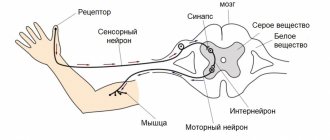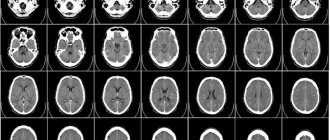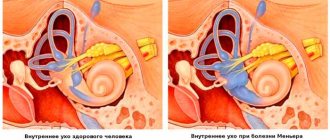All of you are probably familiar with such a physical phenomenon as echo. In nature, echo appears in a variety of places in the mountains, in the forest, in empty rooms (in an apartment, concert hall, temple, well) and so on.
Echo manifests itself in such a way that it repeats sounds, voices, words. In the place where the echo exists, any spoken word will be repeated with a slight delay. In the mountains and forests, sounds can be repeated not once, but many times.
In ancient times, the existence of echoes was explained by the presence of mimicking spirits or magic, but with the advent of the science of physics, this phenomenon was studied in detail, and even more put at the service of man (echo sounders and other devices).
In order to understand what an echo is, you must first understand the nature of the word sound.
Sound concept
Sound is the propagation of waves in a gaseous medium (in this case), that is, in the air. Simply put, air is a gaseous medium.
By making sound, we thereby produce waves in this medium. This is similar to the waves that are formed when throwing a stone into the quiet surface of a pond. Exactly the same waves as in the case of water arise in the air. For the same reason, sound does not propagate in space, since there is no gaseous medium there and there is simply nowhere to form waves.
The ear of a person or animal is configured in such a way as to capture air vibrations, that is, those same waves. A certain strength and sequence of air vibrations are captured by the ear, after which they enter the brain, where they are given a meaning that is understandable for perception: sounds, voices, noise, individual words, and so on.
How to explain to a child what an echo is
To explain to a child what an echo is, you can give as an example the same quiet pond where you threw a stone. Waves arise from the center of the stone's fall and begin to diverge in all directions. As soon as the waves reach any obstacle, they are reflected and begin to reverse. The magnitude and strength of the reflected waves are less, but they are still present.
The picture below will be more clear for children:
The same thing happens with waves in the air. If sound is reflected from a surface that does not absorb it, the waves return back to their source, causing us to hear our own voice a few moments later.
The presence and strength of the echo also depends on the density and rarefaction of the air and many other factors:
1) range of the sound source and reflective surface;
2) the angle of this surface in relation to sound waves;
3) the interval between the direct and reflected wave.
Echo in nature
A person hears only a pronounced and strong echo due to the structure of his hearing organs. However, some animals are able to hear echoes all the time, even if they are very small. This phenomenon has been adopted by some species of animals, for example, bats. Bats make a sound that bounces off surfaces and comes back.
The ears of bats are extremely sensitive and can detect the slightest changes in air vibrations, in particular their own echo. A bat, even developing enormous speed, never encounters an obstacle in flight, since it knows exactly where and at what distance it is.
It happens sometimes, you are walking through the forest with your friends, you wander off in different directions and start cheerfully calling to each other.Suddenly... what is this?
You hear that someone is pronouncing your same words, only in a muffled, quiet, even a little sad way. Echo!
Everyone really likes the echo, it’s funny to listen to it, and you start shouting to the whole forest: “Ay!..” - and call each other for a long time.
But what is this echo? Why does it happen?
You shouted - and the air vibrated, because every sounding body vibrates: the strings of a violin, harp, piano vibrate, your vocal cords vibrate when you speak. The sounding body vibrates, and from it a wave travels in all directions through the air, and when it reaches your ear, you hear the sound.
But then the sound wave encounters some obstacle, like a sea wave on the shore, and returns back, and for the second time you hear your voice, but only a quiet one, because the wave gradually weakens.
You don’t always hear an echo and not everywhere. This requires certain conditions: the obstacle that the sound wave encounters must be at a sufficient distance so that the wave does not have time to return in one tenth of a second, because our ear can perceive the same sound wave no less than after such a period time.
That's what an echo is. That's why it happens.
Man understood the nature of the echo, understood its mechanics. And so, based on the laws of reflection of sound waves, man created a wonderful device - an echo sounder.
This device, installed on board a ship, sends a sound wave into the depths of the sea. The sound travels through the water, reaches the bottom and returns, and is picked up again by the device. Knowing the speed of sound in water and tracking how much time passed between the departure and reception of sound, scientists determine the depth of the sea in this place.
And if you send the sound not into the depths of the sea, that is, not vertically, but horizontally, then you can determine how far the ship is from the shore, or during fog, find out if there are any obstacles ahead that the ship risks running into: Is there a ship coming towards you, is there an iceberg floating? The sound wave encounters an obstacle and returns, it is picked up by a device called a sonar, and it reports the obstacle to the captain.
Many marine animals also have such locators - living instruments that nature itself has endowed them with. The sperm whale has such a device; The dolphin also has it - the smartest animal that exists in the kingdom of living nature.
Recently I read a Bulgarian story about the extraordinary friendship of a white dolphin with a man. This man was shipwrecked and escaped on a small rocky island, and nearby, in a cove, a wounded white dolphin was lying down. The man caught fish and fed it to the dolphin, and the dolphin, having recovered, provided many important services to its savior. So the man and the white dolphin got used to each other and became attached to each other. But then a ship passing by the island picked up the man, and the dolphin was left alone. He waited and waited for his friend to return to him. The last time he saw him was on board a ship, and since then the dolphin met and accompanied every ship that appeared in these waters, all hoping that the man had not forgotten him and would return to him...
More than once, the white dolphin saved ships during severe storms, guiding them through dangerous reefs and underwater rocks. The sailors knew him well, fell in love and declared his life inviolable. They called the dolphin the “white pilot”, and pilots are specialists who guide ships along the waterway they have studied well, along the fairway to the ports.
This Bulgarian story tells about the life of various sea animals and about natural locators, thanks to which they swim freely in the depths of the sea, without fear of tearing their bellies on treacherous reefs, fleeing from enemies. The locator is a wonderful protective device. It is not only found in marine animals.
The bat also has a natural locator.
For a very long time, the behavior of these small animals, which fly freely in the dark, never bumping into any obstacles, always deftly avoiding them, has been a mystery to scientists. And on the fly they still manage to destroy mosquitoes and very tiny mosquitoes. Meanwhile, the eyes of bats are not distinguished by visual acuity; on the contrary, they see very poorly.
What's the matter?
Only recently, about thirty years ago, scientists unraveled this secret. It turns out that bats have their own locator. They emit sounds that we do not hear, our ear does not catch them; These sounds encounter an obstacle, come back, and the mice catch them with their huge ears. So, in general, they don’t need eyes: their ears replace their eyes, they seem to illuminate the world around them with powerful sound headlights.
There is a wonderful invention created by man on the principle of reflecting a wave, only not a sound wave, but a radio wave.
Radio waves also have the ability to be reflected from objects that come in their way. And before the Second World War, scientists created a device capable of detecting enemy aircraft from afar, even before they appeared overhead. This device is called a radar, otherwise known as a radar.
The radar can detect both enemy aircraft in the sky and enemy ships at sea, and determines both their distance and direction.
Radars are needed not only during war, but also in peacetime. They are great helpers. Meteorologists use them to determine the speed and direction of winds at high altitudes and detect the accumulation of thunderclouds. Astronomers, having sent a radio wave to our closest satellite, the Moon, were able to very accurately determine the distance to it. These are just two examples, but there are many that could be given.
Echo! The nature of this phenomenon has long been explained. But in ancient times it seemed mysterious and wonderful. And the ancient Greeks came up with a poetic legend about the forest echo.
...Once upon a time there lived in the forest a beautiful nymph named Echo. She frolicked freely, sang and danced, like her friends - the goddesses of meadows, streams, springs... But the poor little nymph Echo angered the formidable, powerful goddess Hera, and Hera punished her by forbidding her to speak. Nymph Echo could now only repeat other people's words.
That is why we sometimes hear the sad voice of the nymph Echo in the forest. And Pushkin, captivated by the poetry of the forest echo, created wonderful poems about it:
Does the beast roar in the deep forest,
Does the horn blow, does the thunder roar,
Is the maiden behind the hill singing?
Every sound has its own response in the empty air
You will give birth suddenly.
Speed of sound in water and other media
Let's now talk about the speed of sound in a liquid. Particularly in water. It was, of course, more difficult to measure the speed of sound in a liquid. But in 1826, the following experiment was carried out in Lake Geneva: a bell was lowered into the water and at the same time a torch was raised above the water.
Rice. 1. Determination of the speed of sound in water
The researchers in the boat struck the bell, which was underwater, with a hammer. As a result, the sound, which spread through the water and under the water, reached the observer and at that moment another torch was raised on another boat. The time during which this observation occurred was recorded. So, the speed of sound in water in this particular experiment was 1440. The speed of sound in water at 8 C is 1440 .
Please note that in this case there is also a dependence on water temperature. Of course, the highest speed of sound propagation is the propagation of sound in solids. For example, in steel the speed of sound propagation is 5000, i.e. 5 km per second. Depending on the composition of the steel, the speed may vary. It can be more and even be 6000.
We can draw the following conclusion about the quantities on which the speed of sound in various substances depends. Firstly, the density of the substance plays a huge role. Let's look at the table and observe how the speed of sound changes depending on the substance.
| Substance | Sound speed |
| Water | 1483 |
| Lead | 2160 |
| Tree | 5000 |
| Glass | 5500 |
| Copper | 4700 |
| Steel | 5000 6100 |
The second parameter that determines the speed of sound in a medium is temperature. We talked about this above.
Echo-encephalography (Echo-EG)
Echoencephalography (Echo-EG) is a non-invasive ultrasound diagnostic method that allows you to identify the presence of pathological processes and changes in the structure of the brain.
Echo-EG research is performed on modern computerized equipment. High quality expert-class equipment allows you to:
- examine the midline structures of the brain;
- assess the strength and nature of median pulsations in real time to assess the degree of intracranial pressure;
- accumulate and display the received data automatically to reduce the influence of the human factor and increase the reliability of diagnosis.
Why do an Echo-EG examination?
Echoencephalography is most often prescribed by a neurologist for primary diagnosis in cases of suspected brain diseases in adults and children. The results of Echo-EG allow:
- identify volumetric lesions of brain tissue;
- identify foci of hemorrhage if intracranial hematomas are suspected;
- identify the size and location of tumors, cystic formations and foreign bodies;
- identify purulent accumulations if a brain abscess is suspected;
- perform control measurements of the degree of intracranial pressure;
- assess the degree of hydrocephalus (dropsy) of the brain.
Indications for Echo-EG
Echoencephalography is prescribed for adults and children with the following symptoms and complaints:
- with traumatic brain injuries and suspicions of them;
- attacks of nausea not associated with food intake;
- dizziness and tinnitus;
- deterioration of memory and performance, attention deficit;
- loss of consciousness and loss of coordination of movements;
- feeling of lack of air;
- sleep disturbance and frequent headaches;
- neurotic reactions such as tics, enuresis, stuttering, etc.
Most often, echoencephalography is used as a preliminary diagnostic method before magnetic resonance or computed tomography of the brain. In some cases, Echo-EG can completely replace these methods, for example, due to the presence of contraindications or due to the serious condition of the subject.
Contraindications
Echoencephalography is an absolutely safe diagnostic method with no contraindications. The only limitation is open wounds on the head in the areas where the sensors are installed.
Preparation and performance of echoencephalography
Echo-EG does not require preparation. You can maintain your usual daily routine and diet.
Echoencephalography of the brain is most often performed in the supine position. During the examination, the head must be kept motionless, therefore, when conducting Echo-EG in young children, parental assistance may be required. A contact gel is applied to the skin to prevent interference, and sensors are installed. Depending on the type of study, the doctor sequentially or smoothly moves the sensors to different areas of the head. In the first case, the diagnostic result is displayed in the form of a graph, in the second - in the form of a two-dimensional image of a section of the head. The whole procedure lasts no more than 10-15 minutes.
Results of ECHO-EG of the brain
The results of echoencephalography (doctor's report, diagram and/or image) are given to the patient 15-20 minutes after the study. Depending on the data received, you may be prescribed additional examinations, as well as consultations with doctors of other specialties.
| Cost of ECHO-EG | 1,700 rubles |
Sound reflection
Sound reflection
How can you imagine the reflection of sound? You can imagine it as follows: if a sound wave propagates in a substance and reaches the boundary with another substance, then when interacting, the particles of the second body also begin to oscillate. In turn, the particles of the second substance at the interface will transmit their vibrations not only into their environment, but also transmit them to the environment from which the wave came. This is how a reflected wave is created. The reflected wave received by the observer can be perceived by us as an echo.
Echo
Echo is a sound wave reflected from an obstacle that is perceived by an observer.
Fig.2. Reflection of sound. Echo
Please note that we cannot always hear an echo, but only if at least 0.06 s passes from the moment the sound is created to the moment the reflected sound is perceived. If the time is shorter, then we will not hear any echo. Our hearing aids do not perceive the signal as two separate sounds. This is why we don't hear echo in small rooms. A huge role is also played by how many things are in the room that absorb sound. For example, soft porous substances absorb sound well; in this case, no echo is created.
Echo is one of the main problems when designing concert and theater halls. Therefore, the special upholstery of these halls is done in such a way that there is no reflection or this reflection is minimal. But there are areas where we must necessarily create this reflection and strengthen it.
Rice. 3. Horn
For example, the well-known horn works exclusively on the principle of sound reflection. This is either a round or square tube into which we pronounce something, and the sound, as a result of reflection from the walls of the horn, is collected into one beam, which propagates in a certain direction with great intensity. In this case, the sound can be heard much further.
List of additional literature:
Are you familiar with the propagation of sound? // Quantum. 2008. No. 3. P. 32-33. Byalko A.V. Physics of musical harmony // Quantum. 1987. No. 5. P. 41-43. Elementary textbook of physics. Ed. G.S. Landsberg. T. 3. M., 1974.
Interpretation of results: norm and possible diseases
To make a correct diagnosis, the results of the Echo EG and the patient’s complaints are compared. The decoding is carried out either by a neurologist or a laboratory specialist. Only a doctor can make an accurate diagnosis. When interpreting data, the doctor’s experience and precise adjustment of the equipment are important.
To decipher Echo EG data, the doctor looks at three indicators of the echo signal:
- Initial complex. The signal is reflected from the bone, soft tissue, meninges and lateral ventricle on the side where the scanning occurs.
- Ultimate complex. This is the reflection of an ultrasonic wave from the bones of the skull and soft tissues of the head of the opposite hemisphere.
- Between them, a stable M-echo signal is recorded, which is reflected from the middle parts of the brain: epiphysis, pineal gland, septum pellucidum, and others. M-echo is essential for diagnosis.
Echoencephalography can be performed in two modes:
- M-method. One-dimensional scanning in which a graph is displayed on the screen
- Ultrasound scanning. 2D scanning. The brain is imaged in two planes.
Normally, the M-echo distance should be the same on one side and the other of the head. If the deviation is more than 1-2 mm (in children up to 3 mm), then this may be a sign of conditions such as hematoma, cerebral edema, abscess (accumulation of pus), intracerebral tumors, bruises and neoplasms. An increase in the volume of the lateral ventricles and the 3rd ventricle indicates the presence of hydrocephalus.
In a state of wakefulness, sleep, anxiety, the EG echo shows its rhythm: alpha, beta, delta or theta rhythm. Normal frequency is alpha rhythm, 8-13 Hz, beta rhythm, 13-30 Hz, theta rhythm, 4-7 Hz, delta rhythm, 0.5-3 Hz.
In case of severe disorders, electroencephalography is used as a preliminary diagnostic method. Additional research methods, such as magnetic resonance imaging, may be needed.
Conditions for the existence of an echo
Several conditions are required for an echo to appear. Have you ever wondered why echo is not heard in an apartment or a store, but at the same time it is extremely easy to hear in the mountains? The fact is that the human ear hears an echo only when the reflected sound sounds separately from the spoken sound, and is not layered on top of it. To create such an effect, it is necessary that the time elapsed between the influence of the sound itself and the reflected wave on the ear must be at least 0.06 seconds. In a normal environment (for example, in an apartment) this will not happen due to the short distance and various objects that also absorb sound.
Echo-CG results
The result of the study is issued immediately after it is completed. A pediatric cardiologist can interpret the echocardiogram obtained and prescribe the correct treatment.
It is important to identify dysfunction of the heart valves - insufficiency or stenosis. With stenosis, the opening between the atrium and the ventricle of the heart or between the ventricle and a large vessel decreases. This makes it difficult for blood to pass through.
In case of valve insufficiency, on the contrary, the hole is not completely covered by the valve leaflets, and the blood partially flows backward. Both options are characteristic of heart disease. In both cases, heart failure develops. With congenital defects, there may also be non-closure of the septa between the cavities of the heart and a combination of these disorders.
All these structural features of the heart are reflected in the echocardiogram.
Anechoic chamber
There is a room where there is no echo at all. It's called an anechoic chamber. There are two types of anechoic chambers. Each type serves to dampen one or another type of echo. Simply put, in such a chamber, sound (or radio waves) simply do not reflect from the walls. The first acoustic type. It, as the name implies, serves to suppress ordinary sound echo. The second, accordingly, is radio frequency and is necessary to suppress the reflection of radio waves.
Result evaluation
Each structure of the brain, from a small vessel to the bones of the skull, reflects ultrasonic waves in its own way. The procedure for obtaining an echo image on the device screen is based on this. Decoding the result is a comparison of information from quantitative indicators. Both the distances between groups of signals and their total number are measured.
It is customary to distinguish 3 groups of signals:
- formed in the vicinity of the ultrasound sensor - they are reflected from the tissues and bone elements of the skull, as well as the cerebral cortex with the formation of the initial complex;
- reflection of ultrasound waves from the hemispheres - the central complex of signals;
- reflection of impulses from brain tissue and cranial bones, but from the side opposite to the sensor.
In a healthy person, the length of the initial and final complexes is identical. If Echo ES moves more than two millimeters, then it is assumed that a space-occupying formation has formed in the hemisphere opposite to the sensor - a hematoma, neoplasm, cyst.
Whereas interhemispheric asymmetry is revealed due to the different number of echo signals from the left as well as the right hemisphere. The cause of such a failure can be both cerebral hydrocele and malignant neoplasm.
Ancient Greek myth about the nature of echoes
The ancient Greeks explained many natural phenomena with myths. Echo was no exception. The myth about the birth of echo goes something like this: one day, the jealous wife of Zeus, Hera, punished the beautiful nymph Echo, forbidding her to answer questions. Echo could only repeat the last words addressed to her. Echo saw the beautiful Narcissus walking through the forest. He heard the rustling and exclaimed:
- -Who is there?
- -Here! Echo shouted back.
- -Come here!
- -Here! Echo answered joyfully, running towards Narcissus, but he pushed her away, because he believed that only he himself was worthy of his love. So now the beautiful nymph hides in the forests and mountains, occasionally repeating the words of the travelers.
About echolocation
Everyone knows that bats and dolphins use echolocation to navigate in space. However, few people can answer the question: how does it all work? And it works something like this. First of all, the mouse emits ultrasound. Then she catches the echo of the same sound emitted to her, reflected from objects. The bat has the ability to recognize the ultra-short intervals that pass from the emission of a sound signal to the return of the echo. In this way, the mouse determines the distance between trees or other objects, and also sees how far this or that insect is from it. What is surprising is that the bat perfectly distinguishes the echo from a static (immovable) object from a moving object.
Echolocation was discovered in dolphins more than half a century ago. Dolphins, like bats, use ultrasound, mainly at frequencies of 80-100 gHz . The signals emitted by dolphins are incredibly powerful: for example, they can see a school of fish more than one kilometer away!
Small interesting facts
- If the distance from the noise source to the nearest obstacle (wall or rock), then no echo is formed.
- The famous German river Rhine is full of surprises. For example, there is a place where the echo repeats 20 times
- In the city of Verdun, in France, there are two towers. If you shout while standing between them, you will hear the echo of your voice up to 11 times.
- The Ear of Dionysus is a real record holder in the field of echo. This is a grotto in Syracuse, shaped like a human ear. But that’s not what makes him interesting. Due to its shape, the grotto makes the echo incredibly strong. Throwing a stone or a simple clap will echo out of the darkness with real thunder
Sources:
- https://otomkak.ru/chto-takoe-eho/
- https://interneturok.ru/lesson/physics/9-klass/mehanicheskie-kolebaniya-i-volny/skorost-zvuka-otrazhenie-zvuka-eho-eryutkin-es
- https://vivareit.ru/eho-interesnye-dannye-i-fakty/









